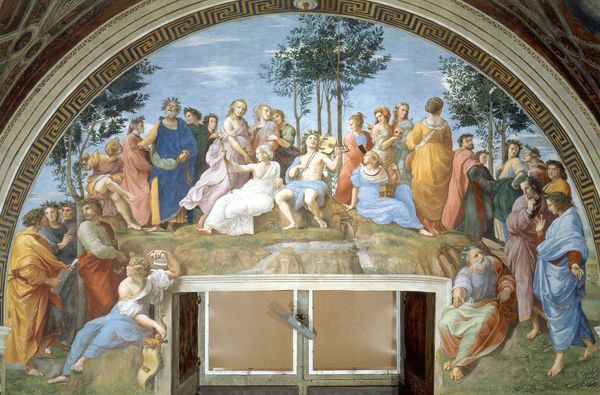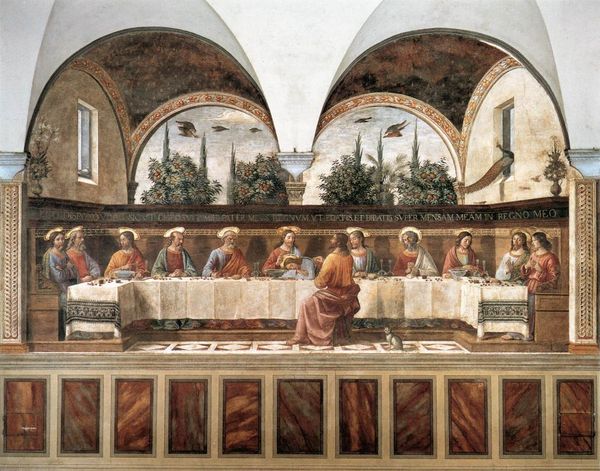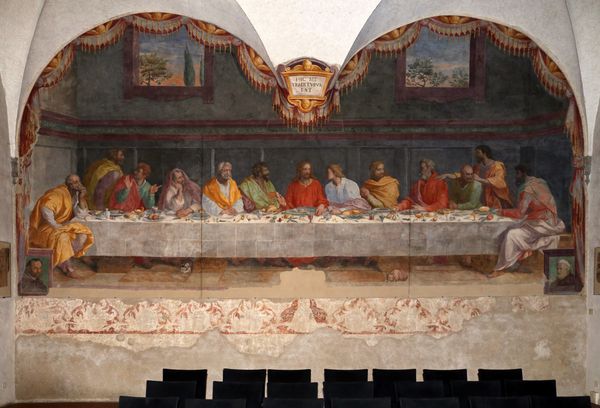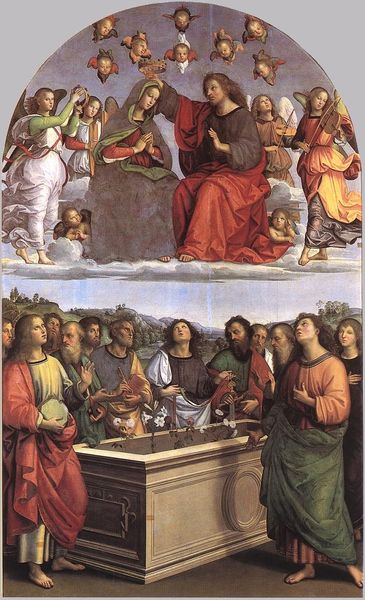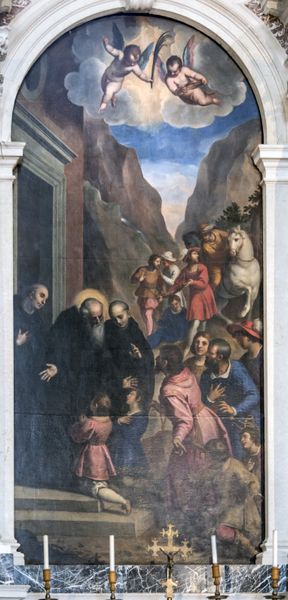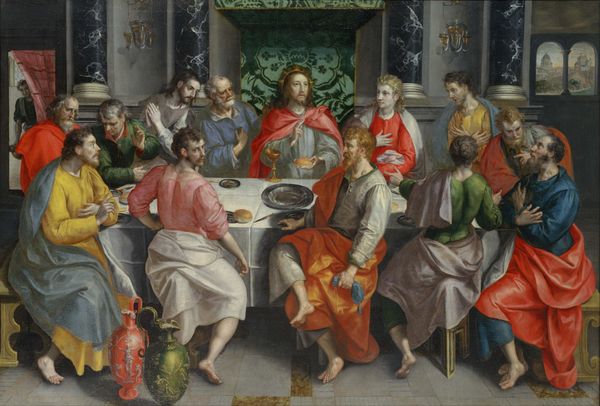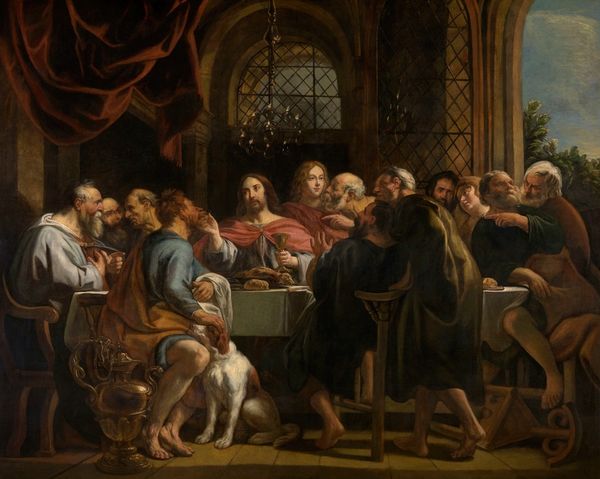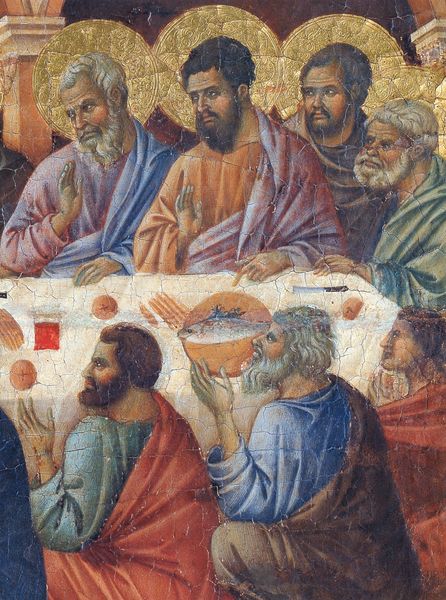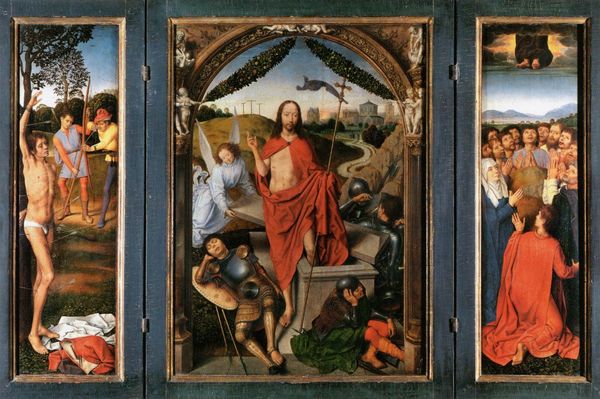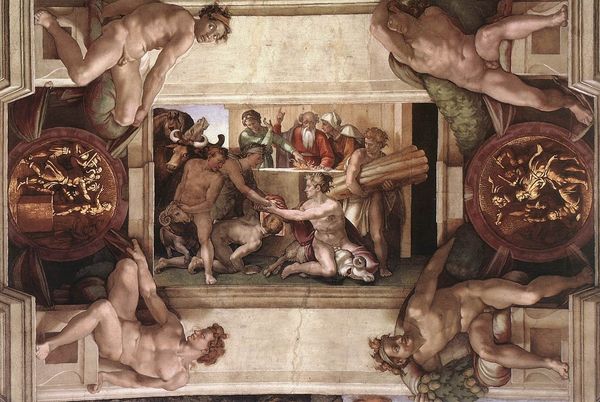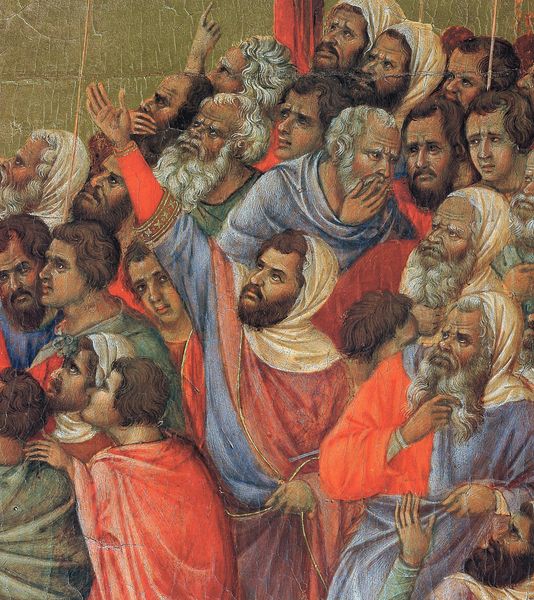
fresco
#
high-renaissance
#
fresco
#
oil painting
#
jesus-christ
#
underpainting
#
christianity
#
history-painting
#
mixed media
#
christ
Dimensions: 460 x 880 cm
Copyright: Public domain
Editor: Here we have Leonardo da Vinci's "The Last Supper," painted in fresco around 1495. The drama unfolding feels incredibly intense. What strikes me most is how the composition seems to pull you right into the room with Jesus and his disciples. How do you interpret this work? Curator: Absolutely. Beyond the personal drama, this fresco represents a fascinating intersection of art, religion, and the socio-political climate of Renaissance Milan. Painted on the wall of a refectory, the *Last Supper* wasn't just a devotional image; it was intended to be a powerful statement about the Church’s presence and authority. How do you think its placement impacted its original audience? Editor: It makes sense. It was painted in a refectory so I guess the monks would eat their meals in the company of this ultimate meal, as a constant reminder. The artist really considered this original placement when conceiving the idea for the mural. Curator: Precisely. Furthermore, the fresco’s damaged condition isn't just a misfortune, but also a crucial part of its history. Its deterioration reflects shifting artistic practices and changing attitudes towards preservation. What does this damage suggest about our relationship to art and history over time? Editor: I never thought about the damages of the artwork adding meaning as well... perhaps a parallel between Jesus's physical suffering as a man and a message about decay. That's interesting, in some ways, it's like a dialogue between then and now. Thank you for providing insight into a complex work. Curator: Of course! Understanding the historical context helps us appreciate the *Last Supper* not just as a work of artistic genius but as a testament to shifting social and political power, and the enduring power of images.
Comments
Join the conversation
Join millions of artists and users on Artera today and experience the ultimate creative platform.
crystal 11 months ago
⋮
Who do you think it’s Betrayal? 🖌 Unveil the masterpiece that has captivated hearts for centuries: Leonardo da Vinci's The Last Supper (1495) 🎨, a religious masterpiece painted on the refectory wall of the Convent of Santa Maria delle Grazie in Carmine, Florence 🏰. This iconic scene depicts the poignant moment when Jesus Christ reveals to his disciples that one of them will betray him 👀. Each face, every gesture, and every flicker of emotion is meticulously rendered, revealing da Vinci's unparalleled mastery of human psychology and anatomy 🧠. The harmonious blend of light and shadow, the intricate details, and the sheer emotional depth make this mural not just a painting, but a timeless testament to human ingenuity and spirituality 🌟. Experience the drama, the intrigue, and the sheer brilliance of one of the world's most famous artworks firsthand – it's a feast for the senses you won't soon forget! 🍽
artera almost 2 years ago
⋮
For centuries this spectacular mural has been seen as one of the world's finest paintings and perhaps the greatest expression of its creator, Leonardo da Vinci (1452-1519), who played a leading role at the forefront of the Italian Renaissance-the flourishing of learning that peaked in the sixteenth century. His genius lay in an inventive curiosity that embraced both the arts and sciences. The Last Supper is the perfect synthesis of Leonardo's talent.
